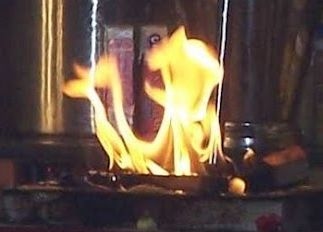दोर्दण्डद्वय-कुण्डलीकृतलसत्कोदण्ड-चण्डध्वनि-
ध्वस्तोद्दण्डविपक्षमण्डलमथ त्वां वीक्ष्य मध्ये रणम् ।
वल्गद्गाण्डीवमुक्तकाण्डवलयज्वालावलीताण्डव-
भ्रश्यत्खाण्डवरुष्टपाण्डवमहो को नः क्षितीशः स्मरेत् ॥
रसगङ्घाधरः आनन २
In Sanskrit poetry, when a poet wishes to convey a scene of battle, commotion, density etc., he frequently uses highly compounded language abounding in the repetition of certain sounds considered to be relatively harsh. The consonants ṇ and ḍ commonly find his favour in such contexts. Panḍitarāja Jagannātha, for example, writes thus in praise of a hero who finds himself in in the thick of battle.
- Ashok Aklujkar. The Pandits from a piṇḍa-brahmāṇḍa Point of View
Two clublike arms.
A big shining bow bent to a circle’s shape.
A piercing pervading sound.
A host of weapon-brandishing weapons devastated.
Seeing you thus in the middle of battle,
which king will not think of the wrathful Arjuna:
His swift Gandiva bow,
shooting tormets of arrows,
Rings of flames dancing Siva’s dance of destruction.
The Khandava forest crumbling to the ground.
- Translation by Ashok Aklujkar (ibid)
इदं पठिवा गणेशस्य प्रातःस्मरणश्लोकः स्मृतिपथमायाति, यं च अनूदितुं वयं प्रयतामहे –
प्रातः स्मरामि गणनाथमनाथबन्धुम्
सिन्दूरपूरपरिशोभितगण्डयुग्मम् ।
उद्दण्डविघ्नपरिखण्डनचण्डदण्डम्
अाखण्डलादिसुरनायकवृन्दवन्द्यम् ॥
In the morning I remember Ganesha:
A friend to the destitute,
His globes adorned with globs of sindura,
His fierce trunk breaking all weapon-brandishing obstacles,
Who is surround by hosts of the leaders of devas like Indra etc.

